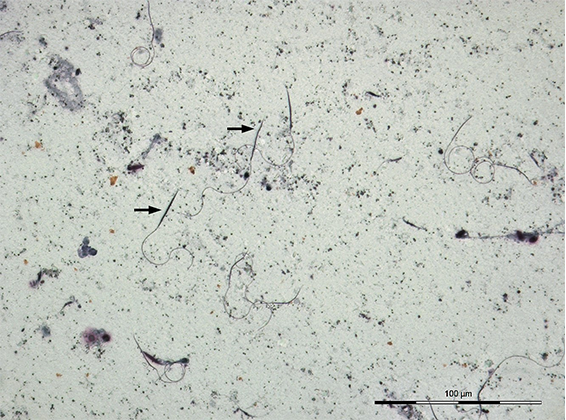Trypanosomatids as Potential Biocontrol Agents for the Bagrada bug?
Bagrada hilaris, commonly known as the bagrada bug, is an invasive pest of economically important crops in the United States. It mainly attacks plants in the Brassicaceae, the mustard family of flowering plants. It also has a relatively large host range. It feeds and damages other agriculturally important food crops including corn, kale, arugula, sunflower, among others.
During dissections of the bagrada bug, a protozoan with a long moving tail called a flagellum, was discovered in the alimentary canal of many specimens. These organisms, known as trypanosomatids, are responsible for several important human, livestock and plant diseases and are transmitted by insect vectors. However, the vast majority of trypanosomatids only infect insects such as stink bugs.
Their life cycle, transmission pathway, molecular-based identification, and the impact of these trypanosomatids on the fitness of the bagrada bug are unknown and additional research is ongoing at the European Biological Control Laboratory (EBCL). A better understanding of the trypanosomatid and bagrada bug interaction could lead to the identification of a new mode of biological control for the bug.

Authors: Mélanie Tannières, Michael Grodowitz and Marie Roche
The European Biological Control Laboratory (EBCL) was established in 1991 near Montpellier, France. EBCL was created by the merger of the former European Parasite Laboratory, established in Paris in 1919, and the Biological Control of Weeds Laboratory in Rome. EBCL has a satellite laboratory in Thessaloniki, Greece. As the only USDA ARS-operated laboratory outside the United States, EBCL develops biological control technologies which can be used to suppress invading weeds and insect pests of Eurasian origin. EBCL researchers do this by searching for natural enemies (insects, mites, and pathogens) in their native habitat, determining their identity, testing their host specificity and potential impact in laboratory and field experiments, and shipping promising organisms to the U.S. for further testing as biological control agents. EBCL collaborates with scientists in many countries in Europe, Asia, and Africa to explore in regions of origin of the target weeds and insects.
